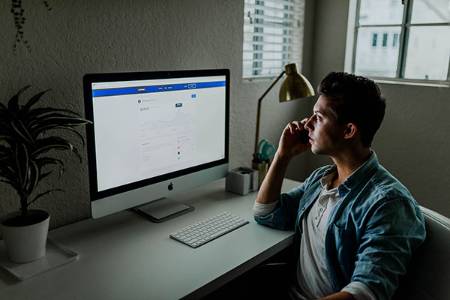WebAIM Helps Make Information Accessible In The Pandemic

Business and education were already moving online. Then came COVID-19.
Dr. Cyndi Rowland, founder and director of WebAIM, reflected on accessibility for people with disabilities who use the web in an interview this week. “Without it, we would literally have a caste system. The haves and have nots,” she said.
WebAIM is part of the Center for Persons with Disabilities at Utah State University. Now in its 20th year, it trains organizaitons around the world on accessibility, including Fortune 500 companies.
WebAIM has added some new free resources to help content creators ensure that everyone can access their work (see the links below).
The problems with accessibility are even more stark when everything—course materials, shopping, a work meeting—is done online. “If you have an instructor who has some materials online for their campus-based, face to face course, those materials are maybe not accessible, but you can get them other ways,” Rowland said. But when everything is delivered over the internet, the materials have to stand on their own.
The world of commerce also has fewer alternatives for quarantined shoppers with disabilities. “For those who took the position that, ‘We’ll wait until someone complains,’ those are the people who are disadvantaging people with disabilities so much,” she said.
People without disabilities may be getting a tiny glimpse into the frustrations people with disabilities face. They might not be able to hear a video conference over a bad connection. Maybe they have to rely on bad auto-captioning. “Many people with disabilities have been painfully aware of what it’s like to be without access,” said Jared Smith, WebAIM’s associate director. “I’m hopeful, though, that this is bringing new light to this issue.”
Resources For USU Employees And Staff:
WebAIM is offering complimentary registrations to its Online Document Accessibility Training course to all faculty and staff at USU through June 2020. The goal is to help USU personnel ensure that the materials they share online are accessible. The documents course will help faculty who are now teaching online, because its focus is in creating accessible Word, PowerPoint and PDF materials.
USU personnel can sign up online. If you have questions about accessibility or you’re interested in participating in the course, contact Christopher Phillips at 435-797-5535 or accessibility@usu.edu.
For Educators:
Rowland wrote a blog post for WCET, a practice, policy and advocacy leader promoting technology-enhanced learning in higher education. In that post, she outlines a number of steps teachers can take to improve the accessibility of their materials, and to make a plan.
For Nonprofits:
WebAIM also created Inclusive Design: Bring Web Accessibility to Your Nonprofit for the Macarthur Foundation. This guide, developed for the nonprofit world, includes many helpful tips for beginners, especially in its “Start with Yourself” section.

